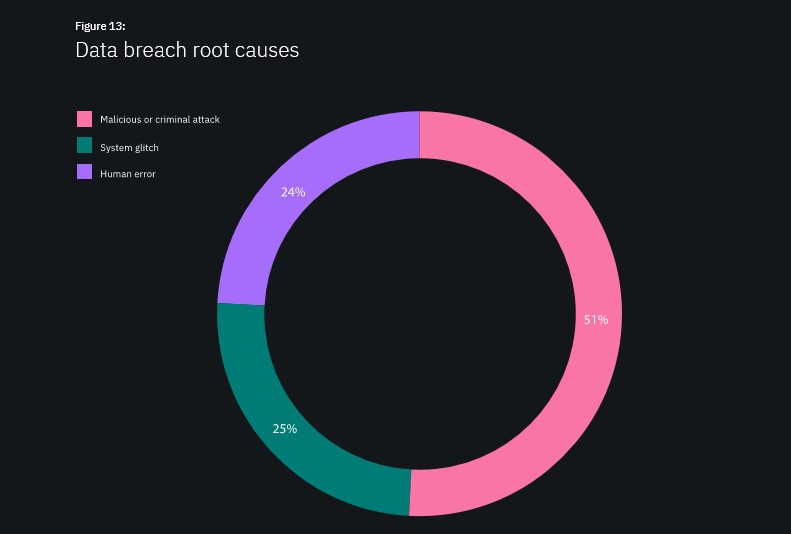 The reasons for servers’ migration can be different – from power outages to a standard change of office. If migration process causes you a headache, then you should find it’s source. What scares you the most in migration - data loss, project cost or downtime of business functions?
The reasons for servers’ migration can be different – from power outages to a standard change of office. If migration process causes you a headache, then you should find it’s source. What scares you the most in migration - data loss, project cost or downtime of business functions?
I will provide you a few examples of the main difficulties medium and large companies are facing during IT migration, and tell you how to deal with them.
Andris Gailitis,
CEO at DEAC
Why migrate?
There are two major reasons why companies decide to migrate. One of them is the inefficient level of IT support, other – inability to protect data. In the modern world, where all processes are speeding up, companies don’t have time to wait for a technical support response: equipment malfunctions lead to intermissions and downtime, which causes more and more financial loss.
Decision to migrate is being made at the speed of lightning, if any of these incidents happen:
- technical issues,
- human error,
- hardware failure,
- cyberattacks,
- blocking of IP addresses and other incidents.
Main reasons of incidents in IT

Source: IBM Security & Ponemon Institute, global study “Cost of Data Breach Study 2019”.
Study has been conducted by interviewing more than 3,211 individuals from 507 organizations. Data breach incidents are shown by their root causes. $3.92M is the average total cost of a data breach in 2018/2019.
Situations might be different.
- Sometimes company is forced to free their premises, that’s why the office is forced to move out with the internal data center.
- Sometimes a single IT solution is needed when different companies are restructuring or merging.
How to migrate
1. First, service provider has to audit systems and identify weaknesses in your enterprise.
Make sure your business has comprehensive security solutions! A disaster recovery plan, data backup and encryption, reliable network solutions, protection against DDoS attacks, internal security procedures are all pieces of a single chain for the reliability and continuity of your business.
2. Diversify risks by distributing and deploying your IT systems and data in several data centers, and choosing unrelated IT providers.
Most often, enterprises do not even presume how long it will take to restore business data. Disaster recovery test opens their eyes to the fact that it can take hours, or even days.
3. When choosing a primary and backup data center, make sure that it complies with international safety requirements:
- ISO 27001:2013 — information management and security standard;
- PCI DSS — compliance provides secure storage and processing of payment card data. This is a quality mark for banks, financial institutions, payment systems and online stores;
- ISO 22301:2012 —business continuity management system certification.
How it is done?
Usually companies migrate from the office, from another data center or platform. There are different types of migration.
1. Physical relocation to another data center
If the company has chosen the physical transportation of IT equipment, then it can suffer from unforeseen expenses – it’s equipment can be damaged or even stolen. In most cases hard drives, power supplies and the motherboard are damaged while moving from one place to another. You can avoid this if you:
- choose a trusted logistics company,
- buy equipment insurance,
- prepare a plan B.
Anyway, you will have to consider buying a temporary equipment, especially if the company needs to ensure round-the-clock data availability. Some companies prefer only their own equipment, in this case all data is temporarily transferred to the data center servers to ensure business continuity, and after equipment is relocated, the data is moved back to the customer’s equipment.
Other companies don’t want to pay for online migration. They copy data, turn off equipment, relocate it and restart. In such cases, you can move you equipment during holidays. Before you choose this option, calculate how much just one day of IT system downtime will cost you, because probably you will end up spending more money.
2. Relocation to another platform
Other option is to migrate to data center’s cloud infrastructure, so there’s no need to physically transport the equipment. Solution brings many advantages to IT infrastructure like flexibility and scalability, but it all depends on the specific business needs.
Complicated migration
The most complicated migration cases are in banking industry. Banks often use outdated programs and operating systems that require ongoing technical support. The process of moving to new IT systems is rather painful for them, as it affects data security issues. However, outdated systems complicate the work of the bank’s IT department, they can fail and significantly slow down customer service processes, as a result of which falls the profitability.
Not to mention government institutions, where bureaucratic processes are being governed under strict rules and procedures, therefore the whole migration from A to Z takes plenty of time.
What to pay attention to during migration?
Customers often are concerned, whether their end-consumers are affected during migration? But the real question is: can your business’ functions be stopped and for how long?
The answer lies within your financial capabilities, which should be compared with losses from downtime. First of all, decide if you need all IT resources to be available 24/7 without interruptions, and if there are critical and secondary systems.
If you can’t risk with your finances and availability, consider migration online; and if the downtime is not so critical to your business processes, you can migrate step-by-step.
Algorithm of actions during migration to the data center
Let’s briefly review the algorithm of actions step-by-step during migration.
Migration process starts with the plan. It should contain: questions and answers about equipment delivery; a precise switching plan; a list of equipment; list of who, where and when will implement the migration process.
Technical preparation for the migration process
At this stage, even the smallest details have to be considered. For example, it is important not to forget about the necessary spare parts for critical equipment.
Work on the in-house platform before migration
It should include equipment and package labeling according to the plan of the new platform (usually planned for the last day before migration), buying insurance and conducting a plan for logistics.
Prompt installation, launch and equipment check-up
The cost of migration depends on the size of the business and the complexity of IT infrastructure. The customer will always be informed about the optimal migration time. Company or person, who organizes the migration, must warn a customer about the unforeseen works, which may affect project costs.
Keep in mind that the final migration cost should not exceed the original by more than 30%.
“The magic pill” from a headache: regional VS local providers
Now let's see if it is worth trusting migration to global providers or whether it is worth choosing regional providers.
Advantages of regional providers:
- Flexibility
Customer will always receive a professional consultation about migration. A data center will be specifically interested in his needs. Regional data centers are able to adapt resources to growing needs, so you don’t have to pay for what you don’t use. - Quick tech support response
You don’t have to spend days waiting for technical support reply or communicate with online chat-bots. You will have a personal manager. - Individual security plan
Regional providers’ weaknesses:
- Lack of global network coverage
If your business is global, then the regional provider won’t be able to provide a worldwide network coverage. Accordingly, in certain regions the delay in data flow may be higher if compared with global providers’ network. - Low competitiveness in the segment of cheap hosting
Regional providers can’t boast of high competitiveness in the segment of cheap hosting, which costs only few euros. They don’t work with the mass audience.
Advantages of global providers:
- brand and reputation;
- fast implementation of services and ready-to-use configurations;
- global network for business accessibility worldwide.
Global providers’ weaknesses:
- Prices
According to customers, global players are cheaper - therefore, there is an option to save money. But don’t rush with conclusions, because as soon as you start using your IT systems at full capacity after the test period, prices can increase dramatically. Ready-to-use solutions may simply not suit your specific needs. - Low level of support compared to regional providers
The global provider will not provide you with the high support level and involvement, comparing to regional providers efforts. - Political (in)dependence
Large global companies located in one of the most influential countries are a potential target of political speculations and fluctuations of financial policy that could affect data and business availability around the world.
Don't trust all your business processes to a single IT service provider, and you will significantly reduce the risk by ensuring safe and uninterrupted business operations. Before any migration, first evaluate where you are migrating, what potential risks may arise and whether your cooperation with the service provider will be sustainable and productive.
Back
